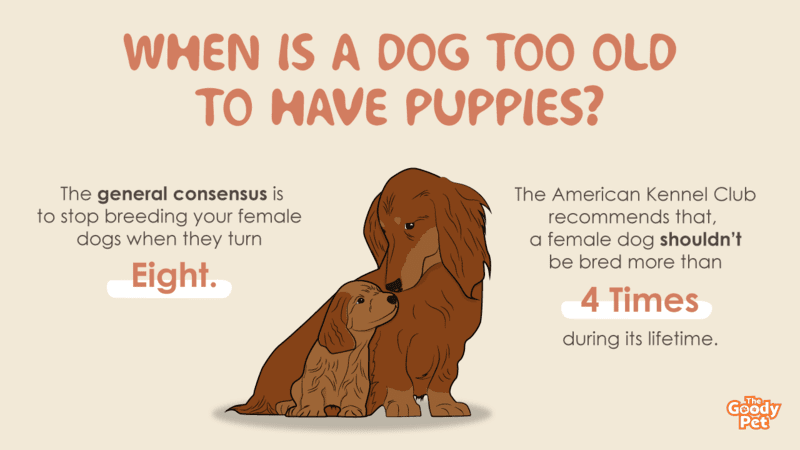We all can’t seem to get enough of adorable, little puppies. But continuous breeding can potentially put our female dogs in danger of succumbing to health issues and physical collapse.
So, when is a dog too old to have puppies? A female dog is generally considered to be too old to have puppies once it reaches 8 years of age; Stricter conditions peg the maximum age for breeding female dogs at 5 years of age. Additionally, a female dog is considered to be too old to continue having puppies, after whelping 4 litters.
The age restrictions stated above are a general guideline, and due to the development of certain health or physical conditions, it can be necessary to stop breeding a female dog much earlier. Also, there’s a pertinent question of whether or not having puppies will shorten a dam’s life and we’ll take a look at the answer to that in a bit. But before then, let’s see what age is considered ideal for a female dog to stop having puppies.
At What Age Should A Female Dog Stop Having Puppies?
Although they never get too old to breed, the general consensus is to stop breeding your female dogs when they turn 8 years of age. Some vets even suggest you stop breeding your female dog from as early as 5 years!
However, there are several other factors, aside from age, to consider when it comes to the issue of the appropriate time for a female dog to stop having puppies.
Some of these other factors to consider include:

Presence Of Genetic Health Conditions
Certain health conditions are transferable from mother to puppy. And when you notice the manifestation of such conditions in your female dog, you should stop breeding immediately.
Some of the health conditions that can be genetically transferred from a dam to its puppies include hip and elbow dysplasia, hypothyroidism, urinary bladder stones, retinal diseases among others.
Pregnancy History
If a female dog has a history of complicated pregnancies, chances are that such problems will arise in the future, and this can be dangerous to both the dam and puppies. Hence, to be on the safer side, the dam shouldn’t be bred again.
Typical cases of complicated pregnancies include an unplanned C-section, excessive haemorrhaging during delivery and miscarriages.
Amount Of Litters Produced
It is recommended that you stop your female dog from getting pregnant once it has produced between 4 to 6 litters. The older a female dog gets, and by extension the amount of litters produced, the higher the chances of stillbirths.
Also, as a female dog continues to produce more litters, there is a tendency for the physical qualities of the puppies being birthed not to match up with that of the puppies produced in previous litters.
Should You Let Your Dog Have Puppies?
Now that you have an idea of when to stop breeding your female dog, there’s a pertinent question that begs to be answered. And that is whether or not to let your female dog have puppies in the first place.
You should let your dog have puppies only if:
- You have provisions in place to find homes for the new puppies.
- It is healthy and strong enough to carry a pregnancy and handle puppy birth.
How Many Times Should You Breed A Female Dog In Her Lifetime?
The American Kennel Club’s recommendation is that a female dog shouldn’t be bred more than 4 times during its lifetime.
However, there are other factors that play a major impact on the frequency with which a dam is bred.
Age When Producing The First Litter
The older a female dog is, as at the time of producing the first litter, the lesser the number of litters it should produce during its lifetime.
As stated earlier, female dogs should stop having puppies once they’re eight years old, and a dam that produces its first litter, say when it’s five years old, will have less than three years of optimal breeding left. And when you factor in the recommended waiting period between pregnancies, there’s not much time left for the dam to produce more litters.
In contrast, female dogs that have started breeding earlier will have more time to produce puppies.
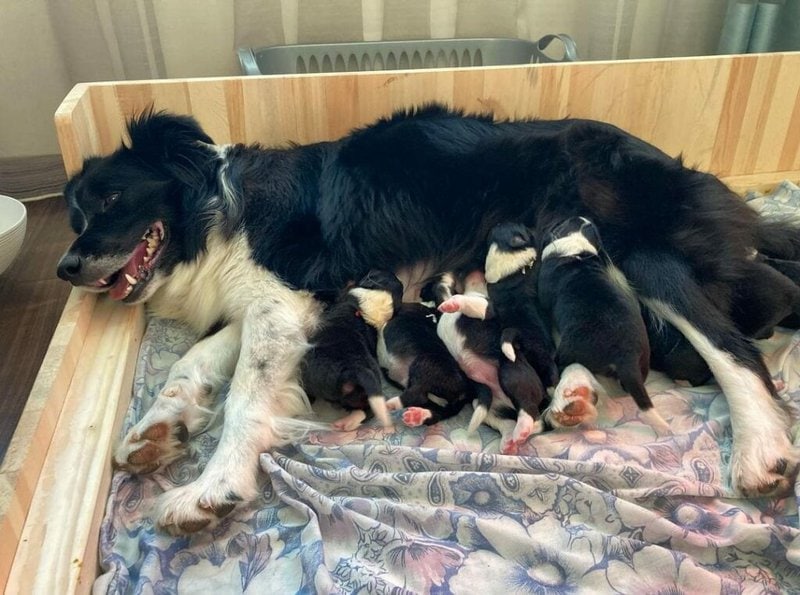
Health
It is highly important that a dam should be strong and healthy enough to handle pregnancy and the birthing process. And this also plays a major role in how many puppies it can produce during its lifetime.
Female dogs that stay healthy, while maintaining an excellent weight throughout their breeding cycles, will generally have no issues whelping three to four litters. While a dam that develops certain health conditions along the way, will mostly have its breeding cycle cut short.
Understanding The Heat Cycle Of A Female Dog
Female dogs generally experience estrus for the first time, as early as six months old, with some bigger breeds having to wait for up to eighteen months for their first experience. And once a female dog goes into heat for the first time, it’ll continue to experience estrus for the rest of its life, at regular intervals of six months.
It is recommended that you should, at least, wait until the second heat cycle before you think about breeding a female dog, as carrying a pregnancy can be quite dangerous for the physically immature six-month old doggie.
How Long Should A Dog Wait Between Litters?
When breeding a female dog, you should wait till the pooch makes a full recovery from the stress of the previous pregnancy before you attempt to get it pregnant again. And on average, this waiting period for female dogs typically falls from anywhere between 18 months to 2 years.
And if you were to strictly follow this waiting period for female dogs, then every pooch should have no more than 3 to 4 litters in its lifetime.
Additionally, the litters should be spread out evenly over the female dog’s optimal breeding years, to keep both the dam and the puppies safe and healthy.
Does Having Puppies Shorten A Dog’s Life?
There’s no scientific evidence to suggest that giving birth to puppies has a direct influence on a female dog’s lifespan.
However, there are certain complications and health issues that may arise during pregnancy or whelping that may significantly shorten a dam’s life. And some of these health issues and complications typical with pregnancy in dogs include:
Dystocia
Dystocia (also known as difficult birth in dogs) refers to a situation where a pregnant female dog is finding it hard to deliver its puppies. And it can manifest in the form of a wrongly positioned fetus, abnormal contraction of the uterus or a pelvis that’s too small for easy passage of the fetus.
Some of the most common causes of canine dystocia include the dog’s breed, size, age weight issues and previous occurrences of difficult birth.
Typical symptoms of dystocia in dogs include:
- Premature (56 days after inception) or late (more than 70 days after inception) labor.
- Vomiting.
- Straining for long periods without pushing out puppies.
- Haemorrhaging.
- Fever.
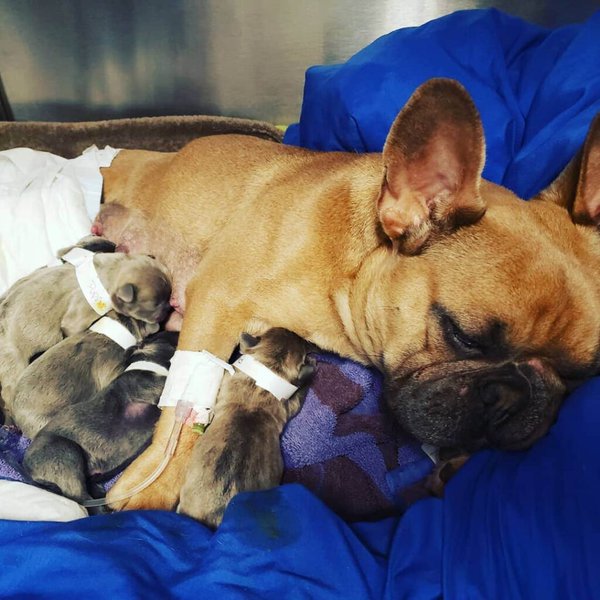
Eclampsia
Eclampsia in lactating female dogs is a health condition in which the doggie suffers from a dangerous drop in blood calcium levels. And this could be due to either a hormonal deficiency of the parathyroid gland, the demands of milk production or inadequate feeding during pregnancy.
A female dog suffering from Eclampsia usually exhibits restless behavior, mild or severe tremors, weakness, excessive salivation, fever, and disorientation among others.
Eclampsia typically develops in lactating dams a few weeks after giving birth, and if left untreated, can lead to seizures, coma, and ultimately, death.
Mastitis
Mastitis is an infection of the mammary glands that is prevalent among pregnant and nursing female dogs. This infection usually occurs as a result of milk accumulation or a bacterial infection, and results in the inflammation of the mammary glands located in the dam’s breasts.
Observable symptoms of mastitis in female dogs include swollen breasts and teats, discolored breasts, bloody milk, vomiting, lethargy and failure of the puppies to gain weight, just to mention a few.
Other Health Issues
Other health conditions that can cause problems for a pregnant doggie include haemorrhaging during delivery, metritis, gestational diabetes, placenta retention and failure to deliver all the pups at once.
What Happens When A Dog Has Too Many Litters?
Apart from the health conditions listed above, inappropriate breeding practices also play a major role in reducing a female dog’s quality of life. And one of such practices is overbreeding a dam.
Overbreeding, in this context, refers to the production of more litters than a dam can physically handle.
Overbreeding can subsequently put a dam in danger of suffering from physical challenges such as joint problems, respiratory issues and birthing difficulties – all of which can combine to shorten a dog’s life.
How Do I Stop My Dogs From Mating?
Spaying And Neutering
The first and most commonly used method of putting an effective stop to mating in dogs is by neutering and spaying the dogs in question.
Neutering is the surgical removal of a male dog’s testicles, while spaying, which is intended to prevent a female dog from getting pregnant, is the surgical removal of the ovaries and uterus.
Both procedures are carried out by a qualified vet under intense anaesthesia, and are intended to reduce the levels of the sexual hormones in both male and female dogs.
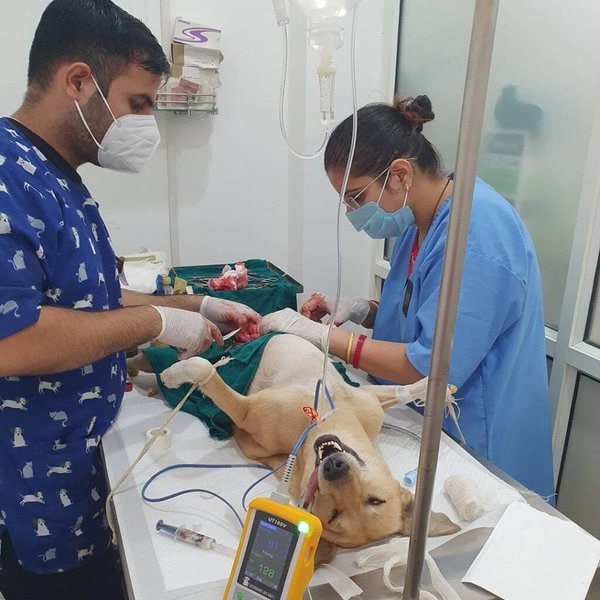
Keep Your Male And Female Dogs Separate
If you’d rather raise intact male and female dogs, one way of preventing them from mating is to keep them away from each other when the female dog is in heat.
This method requires you to have knowledge of your female dog’s estrus cycle, and to be on the lookout for signs of heat in your pooch. As soon as you notice any of these signs, the best thing to do is immediately keep your pets apart before mating can take place.
You can keep your male and female dog separate by putting them in different rooms or by crating your pooches. You can even keep one of your doggies with a friend temporarily.
Also, if you live in an unfenced house, you should be wary about letting your female dog go outside, as a dog in heat can attract male dogs from afar.
And if you plan on taking a female dog in heat on a walk, ensure to do so with a leash to prevent your pooch from running off in search of a mating partner.
Use Deterrents
Another method you can use to discourage your dogs from mating is to employ the use of specially-formulated deterrents intended to keep male dogs away from a female dog in heat.
Chlorophyll has been proven to be effective at masking the scent of a female dog in heat, thereby discouraging male dogs from mating. And chlorophyll is readily available at health or pet food stores in pill or liquid form.
Make Use Of Dog Diapers
You can also keep your dogs from mating by wrapping special canine diapers around your furry friends’ sexual organs.
We recommend Amazon Basics Male Dog Wrap Disposable Diapers for this purpose, a simple solution to put it on your pooch and to discard whenever it becomes dirty for hygiene purposes.
However, you need constant supervision to use this method, as a male dog that is motivated by lust may find innovative ways of pulling off the diaper.
Can Dogs Have Abortions?
If you fail to stop your dog from mating, and your female pooch becomes knocked up as a result, you can abort the pregnancy before it develops into something serious, if you’re not interested in raising puppies.
Also, in the event of the development of certain health conditions and diseases in a pregnant pooch, it might be necessary to abort the pregnancy to prevent complications from arising; thereby, keeping your furry friend safe.
However, before proceeding to abort your dog’s pregnancy, you should consult with your vet to run the necessary set of tests, and prescribe the next and suitable course of action.
How To Know If A Female Dog Is Pregnant?
Signs of pregnancy in a female dog include:
- Sudden change in appetite.
- Reduced activity.
- Enlargement of the nipples.
- Increase in abdominal size.
- Weight gain.
- Nesting.
How To Abort A Female Dog’s Pregnancy?
Some common ways of aborting pregnancies in female dogs include:
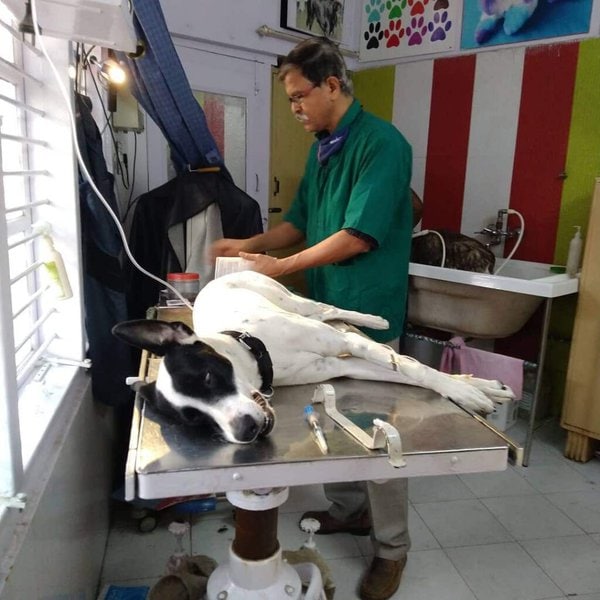
Surgical Removal
Ovariohysterectomy is the surgical removal of the pregnant dog’s uterus and ovaries – basically a form of spaying – and it is usually carried out in the early stages of pregnancy. It is worth noting that female dogs that undergo this procedure won’t be able to conceive in future.
It is also possible to carry out a surgical operation to abort puppies in female dogs that are in advanced stages of pregnancy. But such operations tend to be more complex than the procedures carried out in the early stages of pregnancy, and vets will typically advise that you let the pregnancy run its full course.
Drug-Induced Abortion
There are various medications that can be given to a pregnant female drug to abort pregnancy if you’d rather keep the reproductive system intact in the hopes of future breeding.
One of the most commonly administered drugs to terminate a dog’s pregnancy is Dexamethasone, and it is available either as an oral tablet, oral solution or an injectable solution.
Dexamethasone intended for abortion in canines is usually given as an injectable solution 30 days after a female dog conceives. And it is typically administered twice daily for ten days, starting after the 30th day of pregnancy, to either abort or reabsorb the fetuses.
Other medications such as Alizin, Prostaglandin Injections, Antiprogestins and Prolactin Inhibitors are also very effective at inducing abortion of canine pregnancies that develop due to mismating.
NOTE: These drugs shouldn’t be administered without thorough consultation with your vet, and a proper knowledge of the required dosage!
Related Questions
How Many Litters Can A Dog Have Legally? There are no specific laws or restrictions on breeding dogs in America. As a result, your female dog can produce as many litters as is considered healthy. However, if you do decide to join a breed club, then you should be prepared to follow the breeding ethics of the club in question.
At What Age Is A Male Dog Fertile? Male dogs typically become fertile and can impregnate female dogs when they attain sexual maturity. And in most male dogs, the age of sexual maturity is usually from six months upwards. It is also worth noting that a male dog never gets too old to breed. However, it is recommended that you stop breeding a stud anywhere from between 10 to 12 years old to maintain litter quality.
How Do You Tell If A Female Dog Has Been Bred? Telltale signs that a female dog has been bred include:
- Lethargy.
- Increased sleeping.
- Awkward walking steps.
- Increased licking of the genital region.
- Damp, matted hair.
Note that these signs are noticeable immediately after a female dog has finished mating. And if you arrive at the scene hours later, you won’t be able to tell if a female dog has been bred till it begins to show signs of pregnancy.

